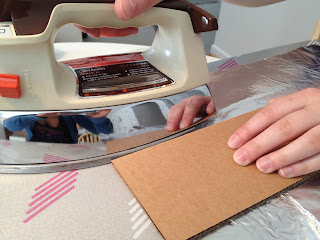Audience: “Snoozers” who can’t help but hit the snooze
button continuously.
Concept: Our concept direction as of now is to help “snoozers” get up
and out of bed. We know that forcing someone out of bed could result in annoyed
and frustrated users; our design slowly gets people up with the assistance of a
deflating mattress ramp that will role him or her out of bed. In order to achieve this we were planning on placing a sequence of blown up tubes in increasing size order into a foam piece on top of the mattress.
Materials: Our first step was the exploration of materials to create
this “ramp.” While brainstorming we thought of “cheer tubes.” Most people know
of “cheer tubes” from football games or birthday parties. We took a trip to a
party store to see how exactly these tubes are bound together and what material
they are made of. From this exploration we were interested in using a nylon or
vinyl material that would expand when pumped with air. We then decided to take
a trip to Joanne’s to explore the materials we could use. While there we would
found clear vinyl, which came in different thicknesses, presenting us with the
perfect opportunity to decide which was best for our needs.
After taking the vinyl home we decided to try and experiment
with ways to bind the edges like the “cheer tubes” (and balloons) we saw in the
stores. With an ordinary iron we laid two pieces of clear vinyl on top of each
other, placed a piece of cardboard as a straight ruler and ironed the edges.
After experimenting with multiple pressures, amount of heat, and the time
needed to seal the material, we were able to bind the four sides of our tube,
leaving a little hole where we could stick the pump in and inflate the tube.
After creating our first relatively successful tube, we proceeded to create a diagram of how we could bind and inflate/deflate multiple tubes, making it more efficient for our ramp to slowly roll the user out of bed. Our next prototype of how we see it working is coming soon. Here is a diagram of what we are thinking.
Brainstorming why it is people "snooze" there alarms every morning. The reason we found most intriguing was the idea of the snooze button as a false sense of security for the users.
Here is a diagram of how we envision the binding of multiple tubes to look. The dark lines are where the bindings will overlap.
Here is a side view of the tubes in the foam piece on top of a mattress.
Sensors:
There are two directions we are thinking about going in for triggering the arduino to respond once a person is awake. One way is using the arduino itself as a timer/alarm so the person would set a time for the "alarm" or arduino to be triggered in the morning. Once it is the time that is set, the arduino would trigger a response to deflate the bed. The other way (we are leaning towards) is to use some other sensor to detect that a person is awake or that an alarm has gone off and then that would trigger the arduino and deflate the bed.
Some types of sensor possibilities for this (scenario 2):
Sensor to detect the sound of the alarm
Heart rate sensor
Other components for our design:
A pump (to deflate the vinyl tubes, and re-inflate them)
A relay
Valves? to seal the tubes once inflated
Power source (possibly 2)







No comments:
Post a Comment